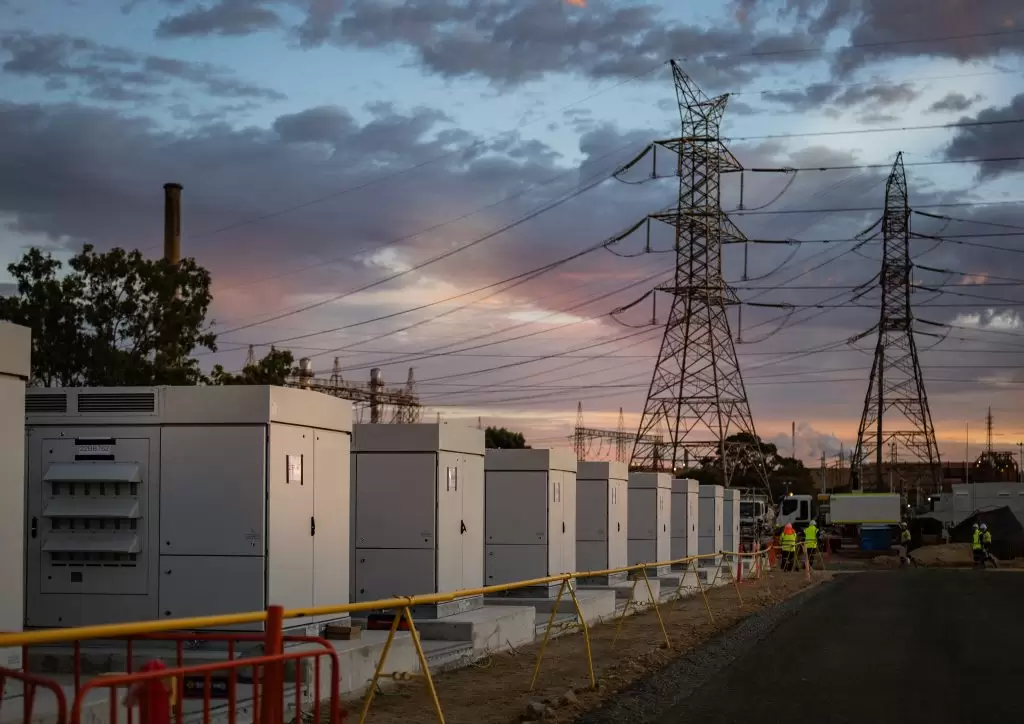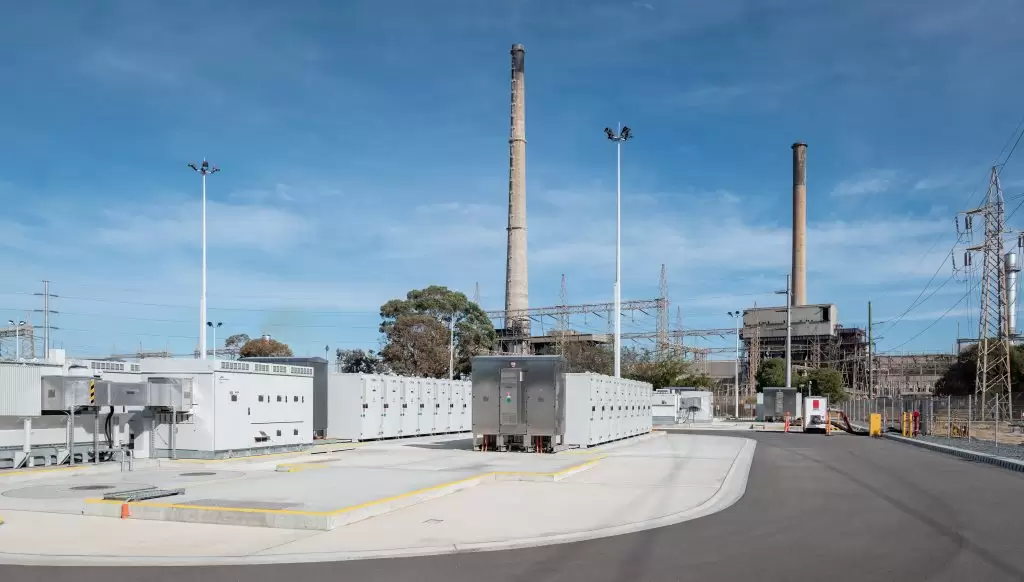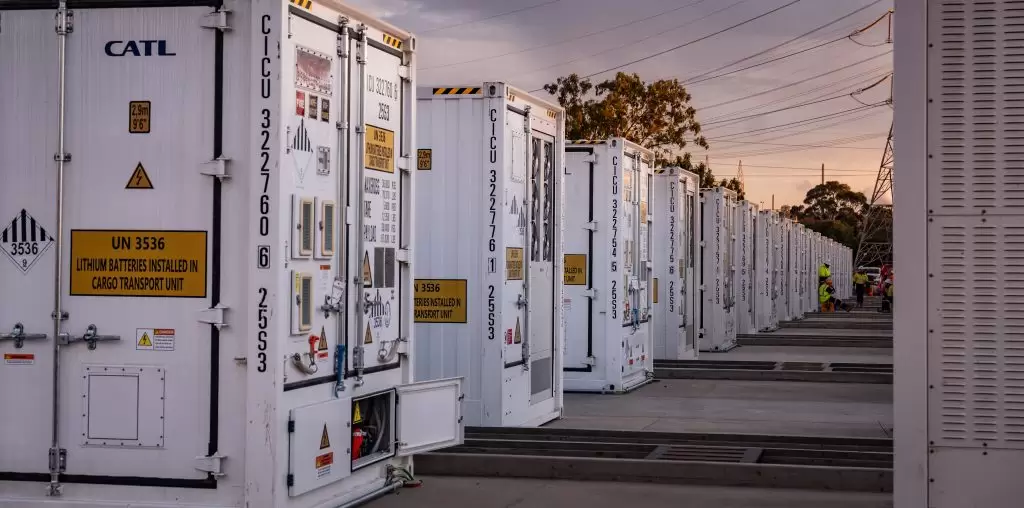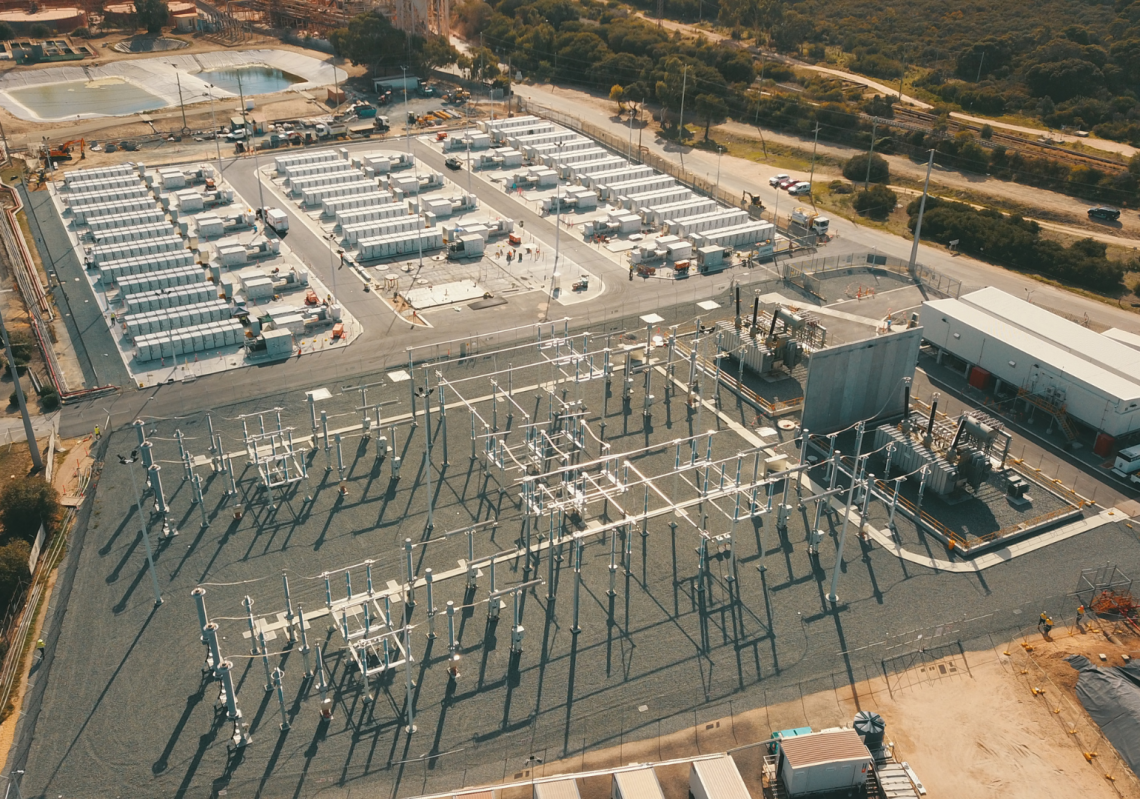Built on the site of a decommissioned coal-fired power station, this modular big battery is the first stage in decarbonising Western Australia’s electricity grid.
This article was originally published in the August edition of create with the headline “Electricity megastorage”.
It’s unsurprising that residents in Australia’s sunniest state have enthusiastically adopted rooftop solar. An average of almost nine hours of sunshine a day in Perth explains why more than 460,000 Western Australian households – or around 30 per cent of homes – had installed solar units as of last year.
Their combined output adds up to the largest power station on the South West Interconnected System (SWIS) grid, the state’s main electricity network which has more than 1.1 million customers and serves most of the state’s population.
Commissioned in September 2023, the Kwinana Battery Energy Storage System Stage 1 – more commonly known as KBESS1 – represents an important step for the WA Government’s decarbonisation efforts as the electricity system moves from fossil fuels to renewable sources.
Developed and delivered by state-owned electricity provider Synergy, with funding provided by the state and federal governments, it is the first lithium-ion, large-scale utility battery energy storage system in the SWIS. The 100-200 MWh facility can power up to 160,000 average homes in WA for approximately two hours.

A firming power source
Dominic Watson, Synergy’s Renewable Development Lead for the project, said that since the containerised battery became operational it has closely followed the predicted modelling.
“It does one cycle per day, serving the evening peak, and charges by soaking up excess solar in the middle of the day then discharging energy to reduce the evening peak,” he told create. “I have seen sometimes that the battery has performed close to two cycles per day, which means it serves morning and evening peaks.”
As a back-up “firming” source of power, large-scale batteries help the grid cope with the uneven household demand for power. While rooftop solar generation provides up to 64 per cent of WA’s electricity needs in the middle of the day, the overwhelming uptake of rooftop solar has put pressure on the grid.
In the absence of large-scale storage, they force the “spill” of excess power generated during the day for no benefit while adding to maintenance and generation costs.
Helping the grid cope with the massive shift to solar, battery storage is proving its efficacy at stabilising renewable energy sources, which not only helps households but also supports the widescale energy transition of industry.
In 2017, South Australia became home to Australia’s (and the globe’s) first big battery, the Hornsdale Power Reserve, but WA is making up for lost time by fast-tracking its Kwinana project, announced in 2019 in the face of minimum-demand constraints.
“[The] strong uptake of rooftop solar … depresses midday demand and the most efficient fix for that is energy storage that can soak that up,” Watson said.
“That was one of the reasons KBESS1 got off the ground. Coupled with things like COVID-19 causing major supply challenges with the battery and inverter, there were a number of other challenges put in front of the project – but it was a good outcome, all things considered.”
Repurposing existing infrastructure
Located at the existing Kwinana Power Station site around 30 km southwest of central Perth, KBESS1’s vital statistics include a size that is the equivalent of 14 tennis courts. At 103 m in length, 123 m wide and consisting of a number of discrete, modularised batteries and its own specially-constructed substation, it is “a very small battery considering how much rooftop penetration we had”.
One of the most innovative aspects of KBESS1, Watson explained, lies not in the size but in how it has led to the repurposing of the outmoded Kwinana Power Station, a facility that was commissioned in 1970 as a traditional steam turbine site fuelled by coal, gas and oil.
“We retired the last units in 2015, and Synergy has been going through a process of rehabbing the site. KBESS1 has been built on the bulk fuel oil storage area. We’ve repurposed the network connection assets down there, so it’s a positive story about a steam-powered site being repurposed into a modern, new-age battery storage facility.”
Small yet significant, KBESS1 represents the vanguard of large-scale battery adoption on WA’s road to decarbonisation.
Stage two underway
Construction began on its follow-up, Kwinana Battery Energy Storage System Stage Two (KBESS2), in June last year. On the same site, yet its own separate facility, when completed at the end of this year KBESS2 will be the state’s biggest grid-connected battery, providing 200 MW of power with 800 MWh of energy storage – four times that of KBESS1’s ability.”
In effect, KBESS2 will be able to power 370,000 average WA homes for approximately four hours. And in another positive example of repurposing, it is being constructed on the former coal stockpile of the Kwinana Power Station.
“They will operate completely independently of each other and can support the market in multiple ways,” Watson said.

The operational aspects of KBESS1 and its much-anticipated sibling are particularly pertinent to the WA Government’s announcement it will retire all state-owned coal-fired power plants by 2030, a move that will leave just one coal generator in the state grid. The downstream effects of large-scale solar storage will manifest in a few short years, Watson anticipated.
“KBESS1 was just the first step for Synergy and the Wholesale Electricity Market (WEM), and now KBESS2 will be four times the capacity,” he said.
Watson also noted installation of the Kwinana batteries comes as Synergy gears up to replace the Collie coal-fired power station with what will become one of Australia’s biggest lithium-based batteries. Once built, that battery will provide 500 MW of power with 2000 MWh of energy storage, or eight times the capacity of KBESS1.
“We’re significantly increasing the amount of battery energy storage in the WEM, and we’ll soon see the effect this has on our market once they become operational,” he said.
Battery storage will be integral to keeping systems secure over the long term, and as the leap from KBESS1 to KBESS2 shows, the technical capabilities of batteries are improving so rapidly that the technology promises to scale up to meet more of the needs of the grid.

A storage system with a four-hour capacity was unheard of only several years ago, whereas now it is on the road to being considered a baseline requirement for battery storage. As the CSIRO noted in its Renewable Energy Storage Roadmap, released in March last year, lithium-ion batteries have reached competitive commercial deployment overall, with short-duration, grid-scale storage applications of up to four hours’ storage reaching maturity.
However, medium-duration grid-scale storage applications of more than four hours remain in the supported commercial deployment stage.
“As we get more capacity into the market, particularly four-hour capacity, which is what AEMO [the Australian Energy Market Operator] has estimated is a direct comparison for synchronous or fossil generation in the market, that will allow us to firm up those renewables and stabilise generation throughout the day, which will then allow greater renewable penetration,” Watson said.
“We need to pair the renewable generation with the energy storage and allow further penetration of large-scale renewable assets as well as rooftop solar.”

Getting to net zero
WA remains the only Australian state with no specific 2030 emissions reduction target, although it has announced it will legislate to achieve net zero by 2050. Part of Synergy’s role in that process is forecasting what that energy mix will look like.
“It’s really hard to say because once you get to that last 10 to 20 per cent of synchronous generation it’s a really hard problem to solve,” Watson said. “We’re still working through those details like everyone else. I can certainly say there will be a lot more renewables and a lot more large-scale batteries, although the jury is still out on what the technological mix seems right to solve those last few per cent.”
Synergy’s own decarbonisation plan has set out to deliver 410 MW of large-scale renewables by 2030 and 1100 MW of four-hour battery storage.
“We’ve modelled that to have an 80 per cent reduction on Synergy’s emissions from 2021 levels, and that equates to around a 40 per cent reduction on the SWIS. It’s going to be a very interesting decade watching these storage assets come in and seeing the WA market transition. It’s going to have a profound impact.”




Did I miss something or was cost and life not mentioned in this article.
What was the total cost of both Stages 1 and 2?
What is the life of the batteries when cycled once a day and twice a day?
What is the plan after a putative 7 to 15 year life (as quoted in EA literature elsewhere) for the disposal of the batteries and an approx cost?
Such information might be of interest to Engineers.
Why is Australia so opposed to nuclear? It can produce cheap, reliable, controllable baseload electricity, while solar, wind and batteries cannot. The grid cannot operate without baseload electricity.
Excellent article.
We need more of these facilities to get to net zero as quickly as possible to reduce our carbon footprint.